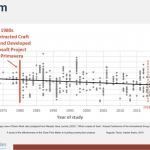By Dr. Anthony Kenneson-Adams FInstLM, Head of Learning & Knowledge Transfer at Project7 Consultancy(UK) Ltd
Today we present the 1st installment of an 8-step process to enable you on your journey to Operational Excellence. We trust you will put these steps into action and power-up your journey to Operational Excellence.
Operational Excellence is the practice of continuously maximising the potential of your people optimising your business processes and as a result achieving best in class performance. This best-in-class performance is repeatable if you consistently follow the following 8-steps.
- Define your objectives.
- Identify areas for improvement.
- Develop a plan.
- Implement the plan.
- Monitor progress.
- Continuous improvement.
- Commit to the Tools.
- Commit to your People.
Beginning this week, we will define these 8-steps so you too can join the ranks of businesses that exemplify Operational Excellence.
Define your objectives
Far too many projects in business begin without clear objectives and then leaders wonder why they fail. So how does an organization define clear objectives. Defining a clear objective requires a structured approach and project manager accountability, so here are some steps you can follow to define those clear objectives and thus be successful.
- Start with the end in mind: Take the time upfront to very clearly visualize the outcome you want to achieve. Be specific and drive constantly to the greatest level of detail that you can achieve. This will be the vison of your specific result, your achievement, or milestone you want to reach.
- Make it measurable: Identify how you will measure progress towards your objective. This must be a specific metric, like revenue ‘$’, the new waste figure ‘%’, training courses completed ‘25’ or time saved per operation ‘minutes’. If you can’t measure it, you can’t change it.
- Identify the timeframe: Determine exactly when you want to achieve your objective. Be realistic and consider factors like available resources and external factors that may affect your progress, but when these elements have been considered, don’t accept compromise.
- Create an action plan: Develop a plan of action that outlines the detailed steps you will take to achieve your objective. This must include specific tasks, timelines, and responsible parties in achievable packets of work.
By following these steps, you can define a clear objective that is specific, measurable, achievable, relevant, and time-bound (SMART). This will help you stay focused and motivated as you work towards achieving your goal.










